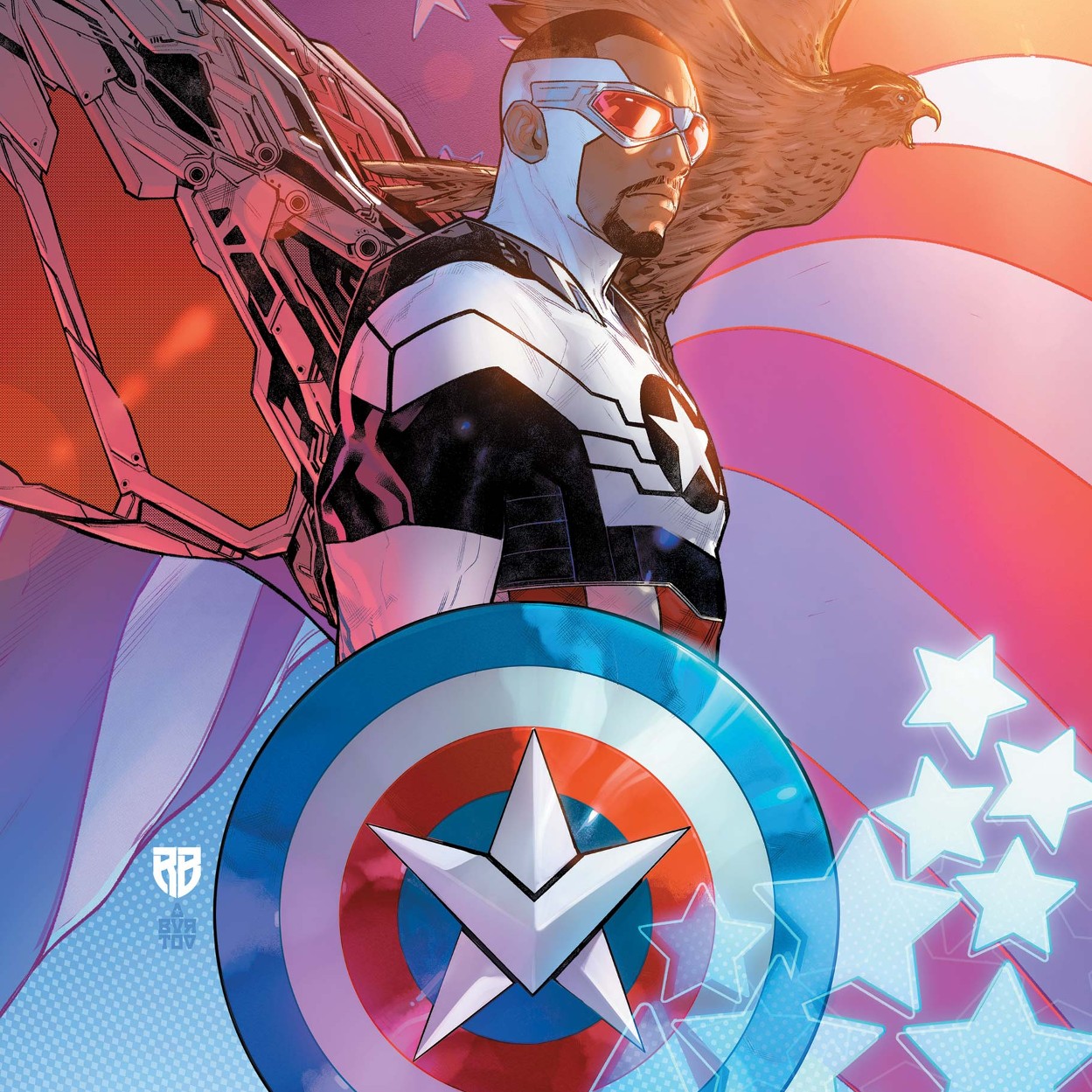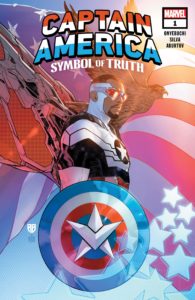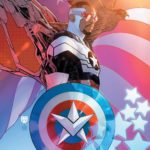
 Sam Wilson picks up his shield once again in Captain America: Symbol of Truth #1, and this time he intends to keep it.
Sam Wilson picks up his shield once again in Captain America: Symbol of Truth #1, and this time he intends to keep it.
Captain America: Symbol of Truth is one of two titles spinning out of last month’s Captain America #0, both following a different Star-Spangled Man; Symbol of Truth centers on Sam Wilson, while Sentinel of Liberty will focus on Steve Rogers. This isn’t actually the first time both characters have shared the title of Captain America in their own unique titles —lest we forget Nick Spencer’s divisive dual run—but now that Sam Wilson is the Captain America of the Marvel Cinematic Universe, it makes sense that the comics would want to reflect that. It probably also helps that this time around, Sam’s story won’t be overshadowed by a controversial storyline or as much overt racism now that people have seemed to (mostly?) come around to the idea of him being Cap. It seems that this series will effectively be a do-over for Sam as Cap.
Captain America: Symbol of Truth #1 spends most of its time reestablishing Sam’s status quo for those who might have missed the zero issue or haven’t been keeping up with the character. Having recently taken the shield back, Sam is once again working with Joaquín Torres— the new(ish) Falcon—and navigating a will-they-won’t-they relationship with Misty Knight, who sometimes also serves as his mission command. He’s quickly sprung into action when Misty tips him off about supersoldier serum smugglers, all the while another nefarious plot of international implications begins unfolding in the shadows. Good thing the Marvel Universe has two Captains America again!
Though a lot of the issue does the requisite setup expected of a relaunch, Captain America: Symbol of Truth #1 is otherwise quite action-packed. The issue parcels out the relevant plot information in-between action scenes, which helps the pacing feel brisk and economical. We’re obviously gonna have Sam kick butt and take names like Captain America would, but there’s also enough going on around the action that establishes personal stakes for him moving forward. This time around, though, the creator attached to Sam as Cap could actually do him more justice than predecessors Rick Remender or Nick Spencer ever did.
Writer Tochi Onyebuchi—the first African-American to pen Sam’s solo adventures as Captain America specifically—raises some intriguing questions about his prior efficacy in that role. In one brief scene, Sam passes by a rally idealizing Wakanda as a better place for Black Americans than the United States itself, which he posits as proof that he’s not doing as good a job as he could. It’s not an uncommon sentiment for American BIPOC people to idealize Africa because of the way they’re treated here, especially if they don’t have the privilege of knowing which specific part of Africa they’re descendants of, and I’m sure Onyebuchi (who is specifically of Nigerian Igbo descent) has firsthand experience on the topic.
This isn’t a throwaway moment done for “woke” points or “virtue signaling;” the final scene does outline how Wakanda will play a role in this arc. But having Sam vocalize a moment of doubt like that endears him to the reader and shows that he is vulnerable. His first time as Captain America didn’t live up to his personal standards (possibly even a meta critique of Marvel’s treatment of him?) and he wants to do better. It’s a pretty good hook for Onyebuchi’s take on the character.
Symbol of Truth also delivers on the art side, with R.B. Silva delivering great visuals throughout. Silva really came into popular esteem with Powers of X a few years ago and has since become something of a superstar artist for Marvel, which this issue more than exemplifies. There are some great images here that are elevated by color artist Jesus Aburtov, whose use of light offers a feel of near-realism to the page. Whereas past creative teams may have not delivered on the promise of Sam Wilson as Captain America, this issue gives me no reason to doubt that Onyebuchi and Silva, at least for this first arc, can live up to the hype.


![[REVIEW] DUNGEONS & DRAGONS: AT THE SPINE OF THE WORLD #1](https://geekd-out.com/wp-content/uploads/2020/11/Dungeons-and-Dragons-at-the-Spine-of-the-World-Runa-Header-150x150.png)

